itselectric establishes greatest practices for curbside EV chargers.
- Thousands and thousands of drivers world wide dwell in dense city neighborhoods the place they don’t have any driveways, and thus no chance of putting in a house EV charger. That’s an issue—and the pre-eminent resolution is curbside charging.
- Curbside charging will not be the identical as vacation spot charging. To suit into the city streetscape, a curbside charger must be compact, and it doesn’t want an connected cable to create litter and tripping hazards. That’s why itselectric designed its personal charger, with a removable cable.
- itselectric’s chargers get their energy from host properties, behind the meter. This avoids the expense and delays concerned in getting a utility interconnection—a significant problem for a lot of public charging initiatives.
Q&A with itselectric co-founder and CEO Nathan King.
For the previous couple of years, the EV trade has been agonizing over the issue of offering charging for city drivers who rely on on-street parking, and don’t have any chance of putting in chargers at their properties. EV journalists, together with your favourite, have spilled a lot digital ink over what as soon as appeared an intractable challenge that threatened to hobble the EV transition.
These days nevertheless, a go to to among the world’s most electrified cities makes the answer plain: tons and many curbside public chargers. In Europe, Oslo, Amsterdam and London match this description, as do a number of Chinese language cities. The US is simply beginning to catch on to the potential of curbside charging, and this presents alternatives for North American operators to study from what’s and isn’t working in Europe.
The sphere of public EV charging is split into a number of classes—curbside charging will not be the identical as vacation spot charging, office charging or freeway quick charging. Efficiently deploying curbside charging requires inventive methods of occupied with the {hardware}, the enterprise mannequin, and the availability {of electrical} energy, as Nathan King, co-founder and CEO of curbside pioneer itselectric, defined to Charged.
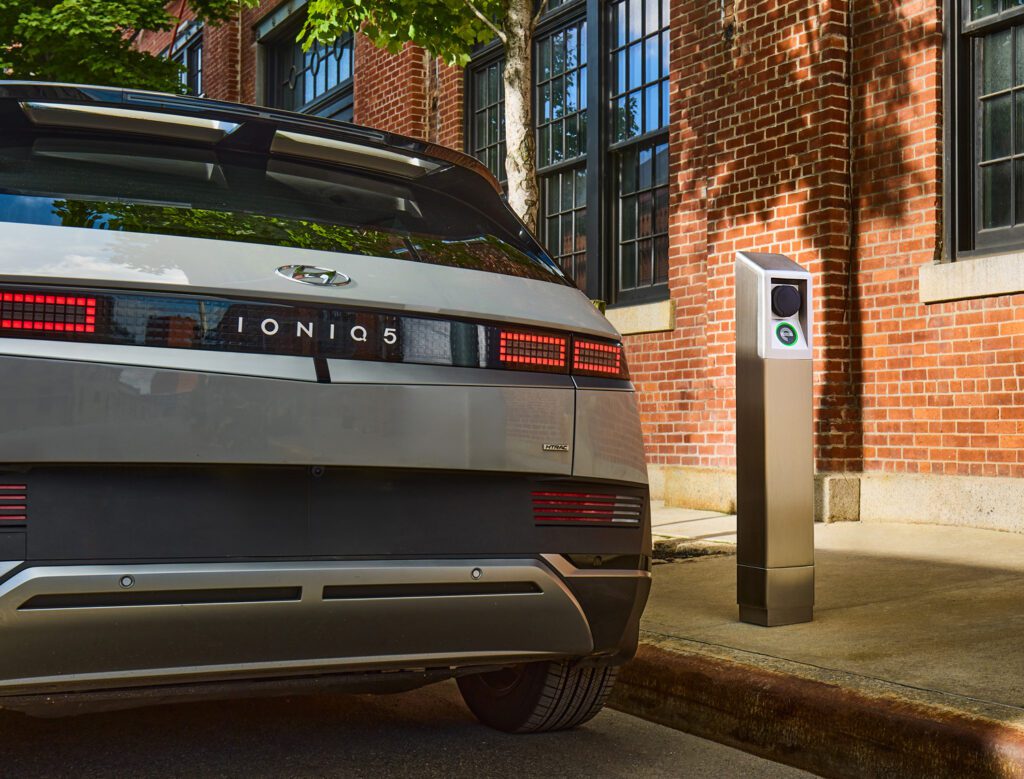

Charged: I’m eager on curbside in the meanwhile, as a result of I simply received again from London, the place I noticed a lot of EVs, and many curbside chargers. Your organization focuses on curbside charging, and also you strategy issues otherwise from the everyday cost level operator. For one factor, you employ a behind-the-meter energy connection in your chargers.
Nathan King: That’s undoubtedly one of many issues we’re doing otherwise. I might say many of the firms which can be working as curbside charging networks are primarily based on a direct-to-utility connection.
Additionally, in North America, we haven’t actually seen a community operator come to the curbside charging house. The place you do see curbside charging in North America, it’s primarily based on an OEM mannequin the place the businesses are promoting the chargers to a utility or to a municipality, which then owns and operates them. What we’re making an attempt to do is to deliver the community operator mannequin to the US, however skip among the allowing issue that you just encounter if you’re making an attempt to attach on to a utility important.
Charged: So the ChargePoints and the EVgos of the world aren’t doing curbside charging?
Nathan King: Effectively, you’ll sometimes see a ChargePoint charger within the roadway. There’s really a handful within the District of Columbia. However in that case, DC is procuring the chargers and putting in them. New York Metropolis additionally has some chargers on the curbside. These had been made by a Canadian firm referred to as Flo, which offered the chargers to the town for them to function.
“In North America, we haven’t actually seen a community operator come to the curbside charging house. The Degree 2 charging trade actually is predicated on an OEM mannequin.”
The Degree 2 charging trade in North America actually is predicated on an OEM mannequin. Corporations like ChargePoint and Blink construct the chargers, and attempt to get them procured by cities. Then the cities or the utilities have to determine learn how to personal and function these chargers. We take the logistics of doing the installations and operation away from cities and utilities, and we earn income from the chargers ourselves. So, we’re not really promoting chargers, we’re putting in and working them.
That is the way it’s being carried out within the EU and the UK. We’re making an attempt to deliver this proprietor/operator mannequin to the US, and curbside is an space the place that mannequin is feasible as a result of there’s actually excessive utilization potential. For those who put a charger in, for instance, a grocery store parking zone, you received’t anticipate 24/7 use of that charger as a result of individuals are doing alternative charging. Perhaps they’re plugged in for one or two hours whereas procuring. For a Degree 2 charger, that’s not a ton of energy that’s being transferred over these couple of hours.
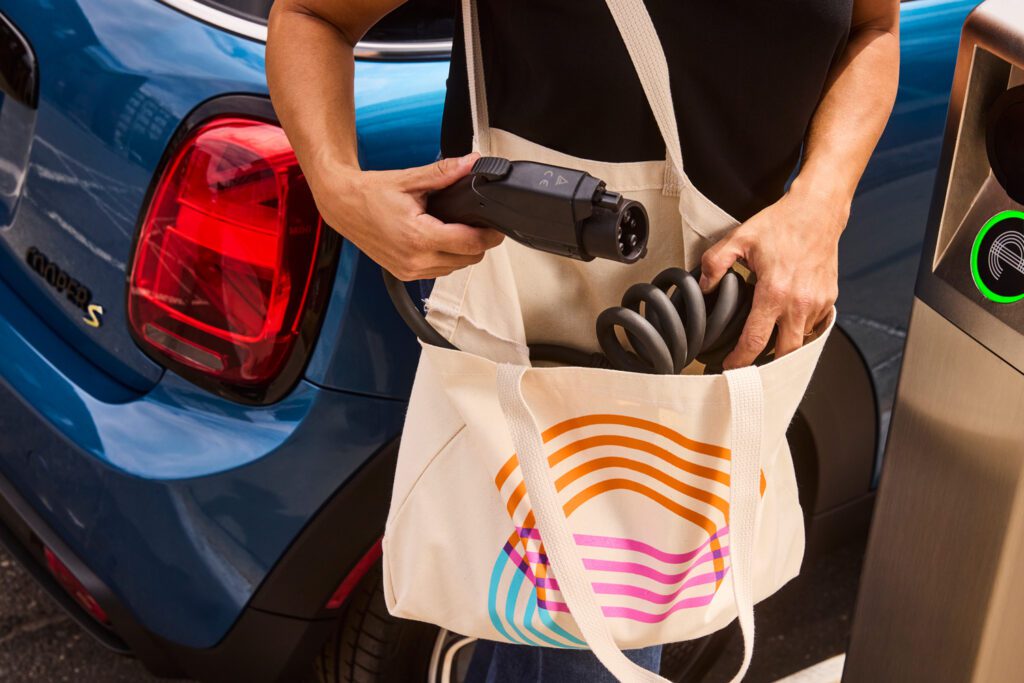
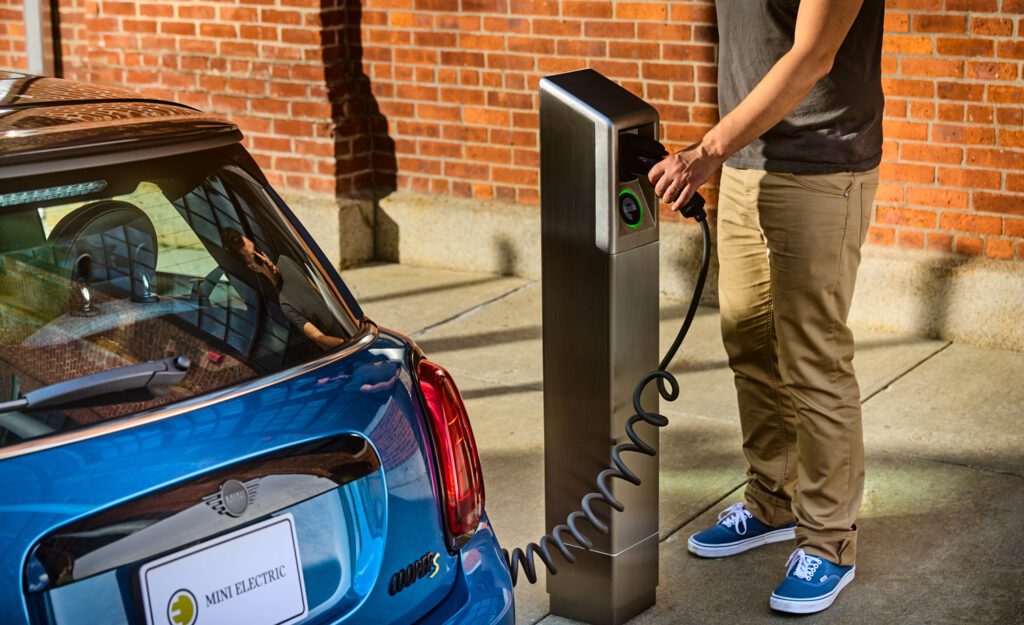
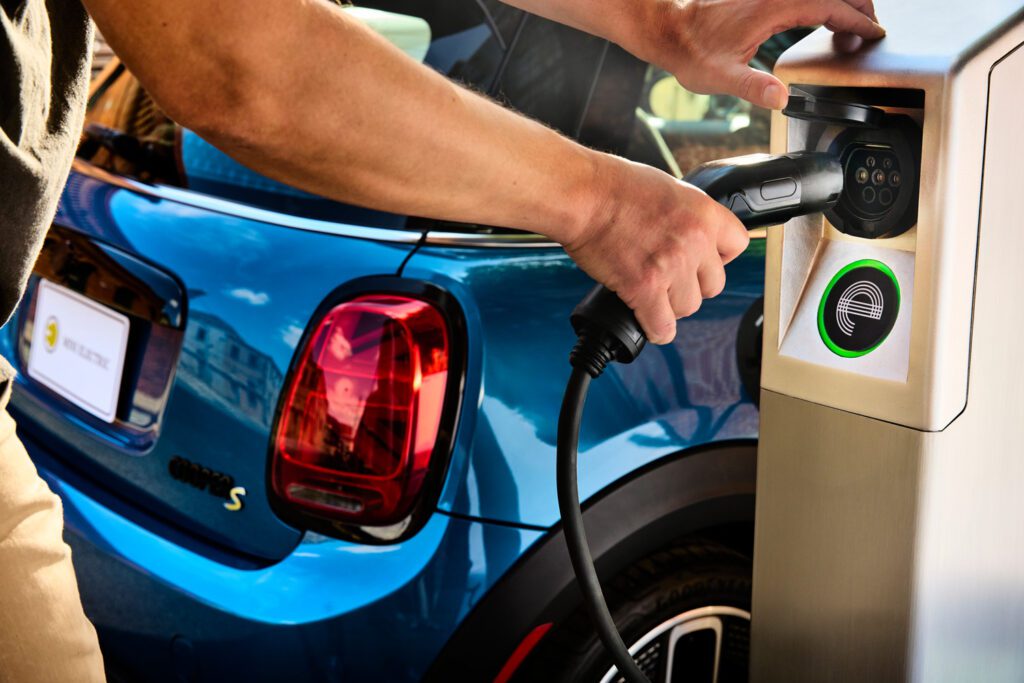
However if you put a charger on the curbside, that charger can be utilized by individuals who dwell in that neighborhood and park their vehicles on the road in a single day daily. So now you have got 24/7 availability to tons of or 1000’s of autos that park inside strolling distance of that charger, and also you see excessive utilization.
What’s curbside charging, precisely?
Charged: It might be a delicate distinction, however how would you outline the distinction between curbside charging and plain previous public charging?
Nathan King: The opposite time period we typically use is right-of-way charging. The excellence is that our chargers in all circumstances are going to be put in on publicly owned property. Take into consideration anyone’s sidewalk in entrance of their constructing. The town owns and manages the rights to that sidewalk and the parking spot that’s subsequent to the sidewalk. Nonetheless, property homeowners have sure rights and obligations for that frontage. You’ve received to shovel the snow within the winter, and also you’ve received to select up your trash. However, property homeowners can reap the benefits of their sidewalk frontage in numerous methods. In some circumstances, industrial properties set up their very own lighting. Right here within the Northeast, individuals typically set up electrical snow melting methods beneath their sidewalks. As a result of you have got that frontage, you may make enhancements to it which can be permitted by the town.
So, there’s a little bit of a grey space in relation to property homeowners’ relationship to their sidewalks, and that lets us take out a allow from the town on behalf of the property proprietor to put in an EV charger. We at all times should have permission from the town to function. However we’re additionally working with the property proprietor for them to provide the facility.
“Our chargers are put in on publicly owned property. Property homeowners earn income from offering EV charging to their neighborhood, however they don’t have to fret about managing the parking spots.”
The opposite factor that’s attention-grabbing about this right-of-way charging mannequin is that the parking house itself is managed by the town. One of many points that we see in locations like flats, condos, office charging, is that the property proprietor turns into chargeable for implementing EV charging at that spot. For instance, when you’re a grocery store and an ICE automobile parks in entrance of that charger, do you tow the automobile? Or do you simply let it sit there and annoy your EV driver clients? There are different issues as nicely, like figuring out pricing construction and overstay charges, that may add operational complexity for a non-public property proprietor.
What we’re unlocking is a mannequin the place property homeowners are in a position to earn a little bit little bit of income from offering EV charging to their neighborhood, however they don’t have to fret about managing the parking spots, since these parking spots are managed and maintained by the town.
Our chargers are put in on publicly owned property. Property homeowners earn income from offering EV charging to their neighborhood, however they don’t have to fret about managing the parking spots.
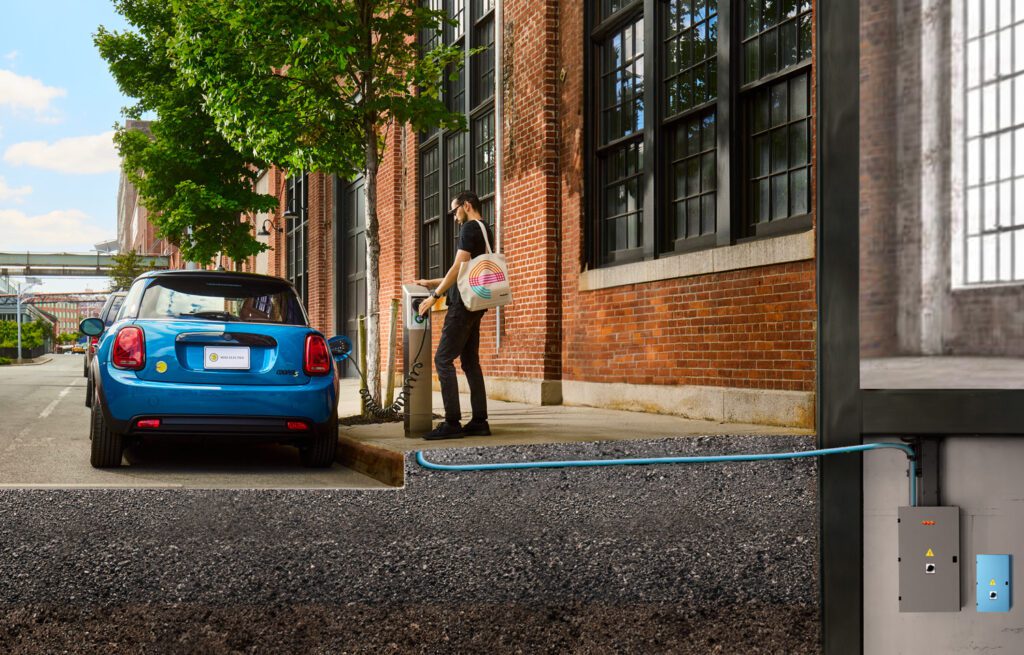
Charged: You supply a turnkey service. You procure the {hardware}, do the set up, and deal with all of the billing and upkeep. Do you try this in-house, or do you contract with different firms?
Nathan King: We’re a reasonably lean staff by way of our operations, and loads of what we do is subcontracted out. Even bigger firms like Tesla or Electrify America, they might have some electricians on workers, however by and enormous, the design and set up work is being carried out by subcontractors. We’re doing the identical factor.
The fitting charger for the proper job
Charged: Inform me concerning the charging station itself. Does anyone construct these so that you can your specs?
Nathan King: That’s proper. We noticed the necessity to have a devoted curbside charging {hardware} in North America. Within the EU, curbside charging is predicated on a bring-your-own-cable or a removable cable mannequin. We don’t have that within the US. Typically talking, if you encounter a charger, it’s going to have a cable connected to it. The untethered cable makes loads of sense for curbside for a few totally different causes, and that’s why we invested in our personal design. You may’t go and purchase an untethered cable that works within the US proper now.
Charged: I’m shocked. Is there actually not a single firm that sells these within the US?
Nathan King: We had been shocked too. And proper now, we’re first and solely. I’ll tick via the benefits. The primary is that it presents a smaller, cleaner, compact design. We received an RFP in Boston, and a part of the explanation that we received is due to the design of the charger. Boston has very slim streets. There’s not loads of room on the sidewalk. Discovering a bit of {hardware} that matches inside the city panorama and doesn’t take up an excessive amount of house, that’s an important consideration.
The removable cable lets you try this. When you add a cable, you then have to determine learn how to handle it. What you would possibly see in a parking storage is a little bit hook the place you anticipate drivers to loop the charger, or a little bit receptacle for drivers to plug it again in. Generally individuals simply mic drop the charger and it will get left on the bottom. On curbside installations, you see cable administration methods that maintain the cable lifted up off the bottom. This provides bulk and complexity, and it doesn’t at all times work.
The opposite factor is the restore and substitute of the cable. On the West Coast, we see loads of points with copper theft. Individuals assume that there’s loads of copper and that it’s straightforward to get out of those cords. And it’s really actually onerous to interchange these cables as soon as they’re reduce from the charger. You will have to recommission the charger. You may’t simply exchange the cable. You’ve received to do a collection of exams to ensure the cable’s functioning correctly. It’s costly, and there’s additionally downtime when you’re ready for the charger to be ready.
“The whole lot is shifting to the J3400 commonplace. We give the driving force the cable that matches their charging inlet. Drivers don’t want an adapter, and we don’t want to interchange the connectors.”
With our system, the drivers maintain their cables with them, so there’s much less alternative for individuals to vandalize the cable. Then if it does occur, we’re not rolling a truck, we’re not ready for substitute components to reach—we simply ship that driver one other cable.
The third benefit is our flexibility in charging requirements. The whole lot is shifting over to the J3400 (NACS) commonplace, however we nonetheless have round 1,000,000 vehicles with the J1772 charging inlet, together with vehicles which can be being offered this 12 months. We give the driving force the charging cable that matches their charging inlet. Drivers don’t want an adapter, and we don’t want to fret about coming again to those chargers in two or three years and changing them with an NACS connector. We’re future-proofed on this charging commonplace.
Charged: What sort of plug is it the place your cable plugs into the charger?
Nathan King: The port on the charging submit itself is a common non-proprietary commonplace—it’s a J3068, the identical commonplace that’s getting used within the EU and the UK. We can be interoperable with the present know-how that’s at the moment functioning within the US, and we anticipate if anyone else develops a removable cable charger in North America, then they’ll additionally use J3068. Simply to make it clear, if you get a charging cable from itselectric, it’ll additionally work with different detachable-cable chargers.
Charged: Who makes the chargers for you?
Nathan King: It’s an organization referred to as Gyre9, primarily based in Connecticut. They’ve their very own line of EV chargers that they manufacture and promote. In addition they do prototyping and product growth, so that they had been actually a terrific accomplice for us. We didn’t see any charger within the North American market that provided the proper design to scale this up, so we designed our personal charger. It’s utterly Construct America/Purchase America-compliant.
Who wants utilities?
Charged: One other revolutionary factor you’re doing is sidestepping among the trouble of coping with utilities by doing a submeter factor. Can you actually do an finish run across the utility like that?
Nathan King: The quick reply is: sometimes, sure. Each utility has totally different preparations for the way they handle what they name a franchise. A utility has particular permission to construct underground traces and have them powered. Now, once we go into a brand new municipality, one of many first issues we do as due diligence is to validate our plans with the utilities we’re working with. It’s a dialogue and it’s a course of, however typically talking, wherever we at the moment have deployment plans, we’ve spoken with the utility and gotten their buy-in for what we’re making an attempt to do.
There are totally different ways in which we’re going to do it. In some circumstances, we may fit with the utility to get a devoted meter with our personal account. We’re simply placing a brand new meter subsequent to the present meter that goes to the home or the industrial property. We’ve got loads of householders proper now that we’re speaking to, however we’re additionally working with industrial properties, multifamily buildings. We’d like to additional develop into institutional property homeowners like faculties and universities.
“Even with pretty low utilization, it’s wherever from $800 to $1,000 a 12 months that the property proprietor is receiving in passive revenue.”
So, typically we could have a meter that’s devoted for the one charger, or possibly two chargers that we’re attaching to it. And typically we’ll simply discover spare capability on the present home panel and faucet into that, and we work out a solution to reimburse the property proprietor for the facility we pull. As a part of our {hardware} package deal, now we have a revenue-grade submeter, as any publicly accessible Degree 2 charger has, that tracks the facility that we’re pulling. We at all times know the way a lot energy goes via our charger, after which we are able to reimburse the property proprietor for his or her utility invoice.
Generally a method has benefits over one other, however in all circumstances, we’re dealing with the set up, the permits, and as soon as the charger goes dwell, we monitor the facility that we’re utilizing, reimburse the property proprietor and likewise share among the income. And even with pretty low utilization, it’s wherever from $800 to $1,000 a 12 months that the property proprietor is receiving in passive revenue.
Charging for charging
Charged: Are you able to inform me how the income breaks down?
Nathan King: Most likely about half the income will return to the utility. The worth for drivers relies on the town. For instance, in Boston, the fee per kilowatt-hour is sort of excessive, in order that’ll be mirrored within the worth we’re anticipating drivers to pay. Within the Midwest and Detroit, the fee per kWh is far decrease. Once we take into consideration our pricing mannequin, we set a few benchmarks for ourselves. We at all times wish to have a per-kilowatt-hour worth that’s aggressive in comparison with DC quick charging, and a price per mile under the value of gasoline.
The associated fee to put in a Degree 2 charger on a curbside is orders of magnitude lower than putting in a DC quick charger, so we don’t have that very same capital funding that the DC quick charging firms have. Energy can be inexpensive as a result of we’re not confronted with demand expenses.
Charged: Give me a fast historical past of the corporate.
Nathan King: We’re about three years previous. My background is in what we name technical structure—determining learn how to work with contractors, learn how to get permits from the town, learn how to get energy linked to your buildings—which I loved in some bizarre means. The town of New York was really my shopper on two totally different initiatives.
In the course of the pandemic, my household determined we wanted a automotive. We dwell in Brooklyn, and we don’t have a driveway, so our automotive could be parked on the road, however there was nowhere for me to conveniently cost it.
That was true three years in the past. It’s nonetheless true immediately. The closest place for me to cost was a non-public parking storage a mile away, and I might’ve needed to pay for the parking, and the charging on prime of that. It’s very costly. So, we purchased a gasoline automotive. And all through 2020 I used to be occupied with this as an issue. There’s about 40 million autos within the US that park on metropolis streets. If we’re going to make this EV transition occur, how are we going to cope with this a part of the market?
The aha second was searching my window and pondering, Why couldn’t I simply toss a twine out, join it to my constructing and plug my automotive in? Then I assumed, what if I may earn money from different drivers paying me for charging? The factor that I had going for me was all this expertise in allowing issues with cities, coping with contractors, and three years later, right here I’m.
Charged: What number of charging websites do you have got up and working in the meanwhile?
Nathan King: We’ve got three in Brooklyn and 4 in Detroit. We need to set up one other as much as 200 chargers in seven cities over the subsequent 12 months. Our latest fundraising is supporting that exercise. We’ve got a few different smaller cities that we need to deploy in, however by way of main metropolitan areas, it’s Boston, Alexandria, Detroit, Jersey Metropolis and Los Angeles. We’re additionally taking a look at a pilot alternative in San Francisco.
Charged: It sounds such as you’re on the verge of transferring from the pilot stage into the scale-up part.
Nathan King: Yeah. Earlier this 12 months we introduced that we had secured UL certifications for the charger. That’s an important step in offering public charging. And between the RFPs that we’ve received and the grant cash that we’re getting, our funding is basically permitting us to construct up our staff and begin to get these chargers within the floor.
The compulsory query
Charged: Yet another query, which I ask everyone. Why is the reliability of public chargers so abysmal?
Nathan King: Yeah, how do I not provide you with a 25-minute dissertation on this? I can name out design, however I believe I’ve already talked about that sufficient, so I’ll name out the enterprise mannequin. Public Degree 2 charging within the US is usually a mannequin through which property homeowners purchase chargers from charger producers and function them themselves. However I believe the proper mannequin for Degree 2 charging is for the corporate that makes the charger to be the corporate that owns and operates it.
You’re then incentivized to design a charger that’s constructed to final, as a result of your income will not be primarily based on making the sale. It’s primarily based on incomes steady income—and that income goes down as quickly as that charger stops working. Cities and utilities are experimenting with curbside charging, however in the end they don’t wish to be managing networks of 1000’s of EV chargers. It’s not what they do. By some means we have to create accountability for the corporate that builds the charger to make it possible for that charger stays up and working.
This text first appeared in Situation 69: July-September 2024 – Subscribe now.


